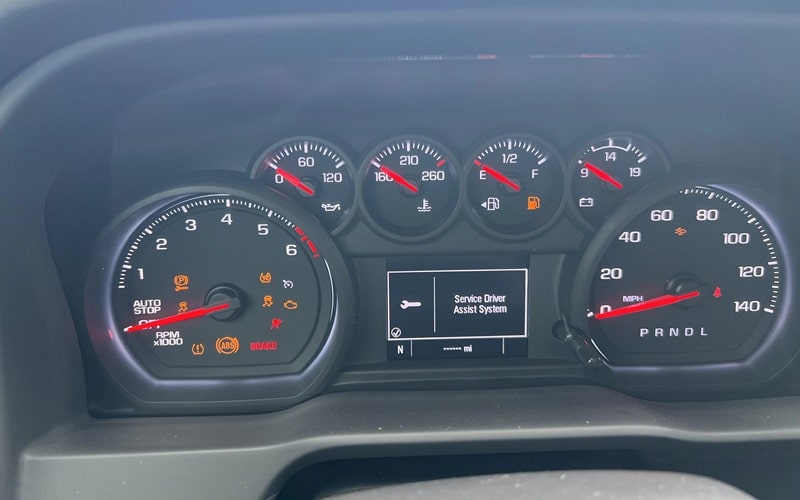When to Replace Your Tires: Guide to Safety and Performance
Tires are the unsung heroes of our vehicles, bearing the weight of our cars and keeping us safely connected to the road. However, like all components, they wear out over time and need replacement. Knowing when to replace your tires is crucial for your safety, vehicle performance, and wallet. This guide will explore the key […]
Tires are the unsung heroes of our vehicles, bearing the weight of our cars and keeping us safely connected to the road. However, like all components, they wear out over time and need replacement. Knowing when to replace your tires is crucial for your safety, vehicle performance, and wallet. This guide will explore the key indicators that signal it’s time for new tires and best practices for maintenance and safety.

How Tire Wear Happens
Wear is a natural process that occurs as you drive. However, several factors can accelerate this wear:
- Driving habits
- Road conditions
- Climate
- Tire maintenance
- Vehicle alignment and suspension
Let’s dive into the indicators that tell you it’s time for a tire change.
Tread Depth
The most critical factor in determining rubber replacement is tread depth. Tire tread is designed to channel water away from the contact patch, ensuring good traction in wet conditions. As the tread wears down, this ability diminishes, increasing the risk of hydroplaning and loss of control.
How to Check Tread Depth:
- The Penny Test: Insert a penny into the tread groove with Lincoln’s head upside down and facing you. If you can see the top of Lincoln’s head, your tread depth is less than 2/32 inches, and it’s time to replace your tires.
- Tread Wear Indicators: Most modern tires have built-in tread wear indicators. These are small bars of smooth rubber that run perpendicular to the direction of the tread. When these bars become flush with the adjacent ribs, it’s time for a replacement.
- Tread Depth Gauge: Use a tread depth gauge for a more precise measurement. Most experts recommend replacing wheels when the tread depth reaches 4/32 inches for all-season tires and 5/32 inches for winter tires.
Age of the Tires
Even if your rubber appears to have adequate tread, age can be a critical factor. Rubber compounds deteriorate over time, even if you haven’t used the them much. This aging process can lead to sudden failure.
- Most manufacturers and safety experts recommend replacing tires that are 6-10 years old, regardless of tread depth.
- Check the sidewall for a four-digit DOT code. The first two digits represent the week of manufacture, and the last two represent the year.
Visible Damage
Regular visual inspections can reveal damage that necessitates replacement:
- Bulges or Blisters: These indicate a weakening of the internal structure and can lead to a blowout.
- Cracks in the Sidewall: Small cracks can appear due to age or exposure to the elements. Significant cracking is a sign that the tire needs replacement.
- Cuts or Punctures: While you can repair small punctures, larger cuts or punctures, especially in the sidewall, usually mean it’s time for a new tire.
Uneven Wear
Uneven wear patterns can indicate alignment issues, improper inflation, or problems with suspension components. While addressing these underlying issues is crucial, significantly uneven wear often means it’s time for new rubber:
- Center Wear: If the center of the tread is more worn than the edges, they may be overinflated.
- Edge Wear: Wear on both edges could indicate underinflation.
- One-sided Wear: If one side of the tread is more worn than the other, you may have an alignment issue.
Vibration or Noise
While not always indicative of problems, unusual vibrations or noise while driving can sometimes signal issues:
- Vibrations that you feel in the steering wheel or through the vehicle’s floor can indicate internal damage or severe uneven wear.
- A thumping or rhythmic noise that increases with speed might mean a flat spot on the tire or internal separation.
Factors Affecting Tire Lifespan
Understanding what affects lifespan can help you extend the life of your tires and know when to expect replacement:
- Driving Habits: Aggressive driving, including hard braking and rapid acceleration, can significantly shorten rubber life.
- Road Conditions: Frequent driving on rough or unpaved roads can accelerate wear.
- Climate: Extreme hot and cold temperatures can affect performance and lifespan.
- Proper Inflation: Maintaining the correct pressure is crucial. Both over-inflation and under-inflation can lead to premature wear.
- Regular Rotation: Rotating your tires according to the manufacturer’s recommendations helps ensure even wear.
- Alignment: Proper wheel alignment prevents uneven wear and extends life.
- Vehicle Load: Consistently overloading your vehicle can stress tires beyond their design limits, leading to premature wear or failure.
Best Practices for Tire Maintenance
To maximize the lifespan and ensure optimal performance and safety:
- Check Tire Pressure Monthly: Use a reliable pressure gauge when they’re cold (haven’t been driven for at least 3 hours).
- Rotate Regularly: Most manufacturers recommend rotating tires every 5,000 to 8,000 miles.
- Balance and Align: Have your tires balanced and your wheels aligned according to your vehicle manufacturer’s recommendations.
- Inspect Regularly: Perform visual inspections at least once a month, looking for signs of damage or uneven wear.
- Mind Your Load: Be aware of your vehicle’s load capacity and avoid overloading, which can stress tires.
- Seasonal Considerations: If you live in an area with significant seasonal changes, consider using season-specific tires for optimal performance and safety.
The Importance of Timely Replacement
While it might be tempting to squeeze a few more miles out of worn tires, the risks far outweigh any potential savings:
- Safety: Worn rubber significantly increases stopping distances, especially in wet conditions, and increases the risk of hydroplaning.
- Performance: Worn tires can negatively impact your vehicle’s handling, braking, and overall performance.
- Fuel Efficiency: Properly inflated, well-maintained tires can improve your vehicle’s fuel efficiency.
- Comfort: New tires often provide a smoother, quieter ride than worn ones.
- Legal Considerations: In many jurisdictions, driving with tires worn beyond certain limits is illegal and can result in fines.
How to Choose Replacement Tires
When it’s time for new wheels, consider the following:
- Match the Original Specifications: Unless you have a specific reason to change, stick with the size and type recommended by your vehicle manufacturer.
- Consider Your Driving Needs: Think about your typical driving conditions. Do you need all-seasons, or would you benefit from summer and winter sets?
- Read Reviews: Look for independent reviews from reputable sources.
- Understand Ratings: Familiarize yourself with treadwear, traction, and temperature resistance tire ratings.
- Don’t Mix: It’s best to replace all four tires at once. If you must replace only two, put the new ones on the rear axle for better stability.
Stay Safe On The Roads
Your tires are a critical safety component of your vehicle. Regular inspections, proper maintenance, and timely replacement are essential for ensuring your safety on the road. By understanding the signs of wear and the factors that affect lifespan, you can make informed decisions about when to replace your tires. Remember, when in doubt, consult with a professional tire technician. The cost of a new set is a small price to pay for the safety and peace of mind they provide.
Stay safe on the roads, and don’t forget to give your tires the attention they deserve!


